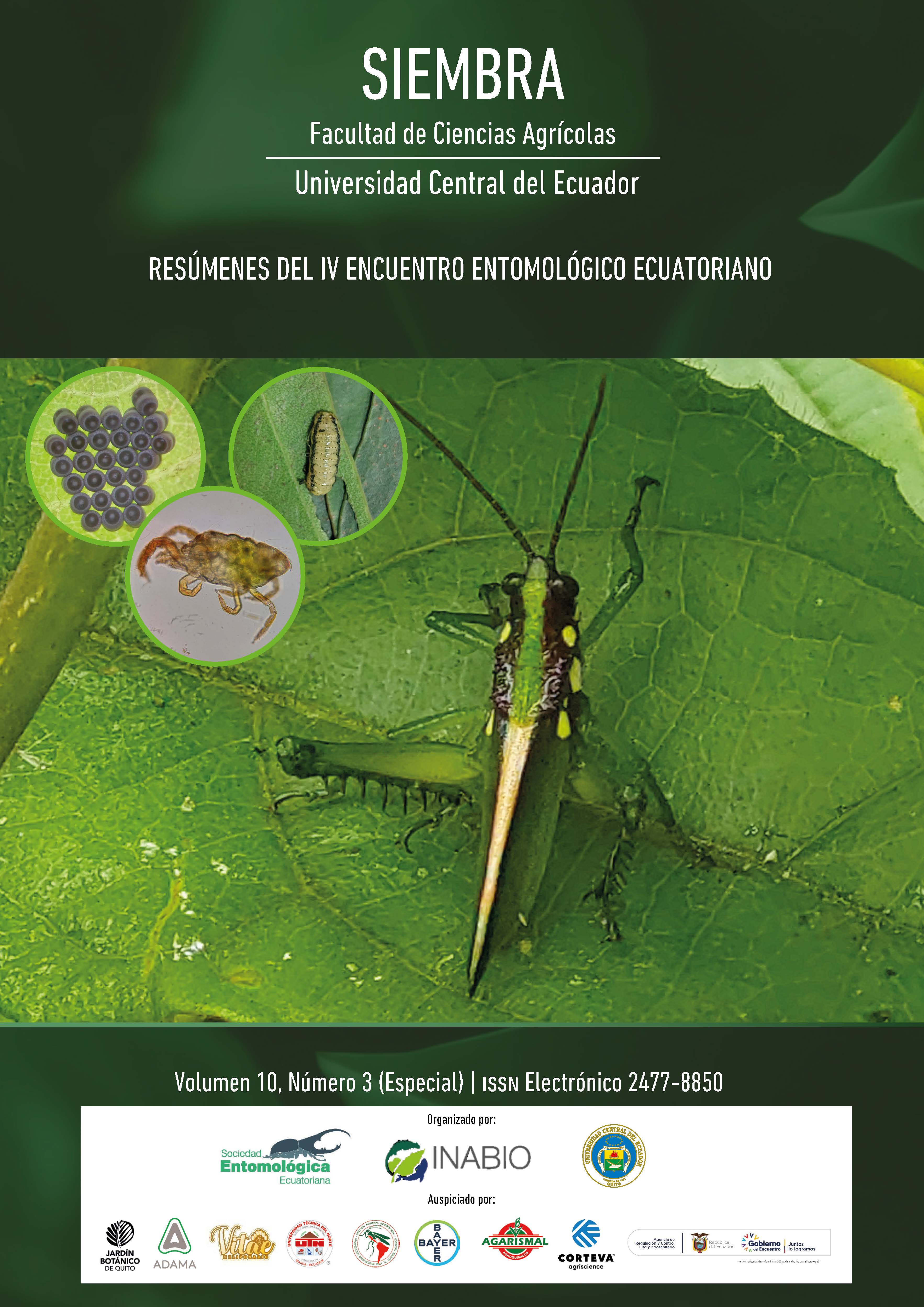ED012. Potential effect of climate change on the biodiversity of soil invertebrates in Yasuní
Main Article Content
Abstract
Climate change is a current global problem induced anthropically, which predicts drier and warmer future conditions with strong drought events and high temperatures for much of the Amazon region. Additionally, negative repercussions on ecosystem function mediated by the edaphic fauna (i.e decomposition of organic matter) are expected. Based on these projections, the focus of this study is on the impact of warming and drought on the structure of soil invertebrate communities in an Amazonian tropical forest through their response in terms of abundance, diversity, and functional groups to drought exposure and/or increased temperature. The experimental design was carried out in the Yasuní National Park, in an area of 15 × 20 m with 40 × 45 cm quadrants to expose them to a 3 °C increase in surface soil temperature and drought induction by installing small roofs that isolate water. Preliminary results are shown with the processing of 20 % of samples. The morphospecies under study were grouped into clusters according to their function. Additionally, the effect of the treatments was overlapped according to the NMDS (Non-Metric Multidimensional Scaling) analysis, suggesting that there is little difference between them. Moreover, the most abundant groups were those of ants and mites. In this way, it will be possible to show if this trend is maintained or changed when processing 100 % of the samples. This research demonstrates that understanding soil biodiversity can help us reconnect ecosystem services with soil biodiversity, in search of maintaining a balance in their functions.
Downloads
Metrics
Article Details

This work is licensed under a Creative Commons Attribution-NonCommercial 4.0 International License.
The authors who publish in Siembra know and accept the following conditions:
- Authors retain the copyright and grant Siembra the right of first publication of the work, under the Creative Commons Attribution License. Third parties are allowed to use what has been published as long as they refer to the author or authors of the work and its publication in this journal.
![]() This content is licensed under a Creative Commons Attribution-Noncommercial 4.0 International (CC BY-NC 4.0).
This content is licensed under a Creative Commons Attribution-Noncommercial 4.0 International (CC BY-NC 4.0).
- Authors maintain the copyright and guarantee Siembra the right to publish the manuscript through the channels it considers appropriate.
- Authors may establish on their own additional agreements for the non-exclusive distribution of the version of the work published in Siembra, acknowledging their initial publication in the same, such as in institutional repositories.
- Authors are authorized to disseminate their work electronically once the manuscript is accepted for publication.

